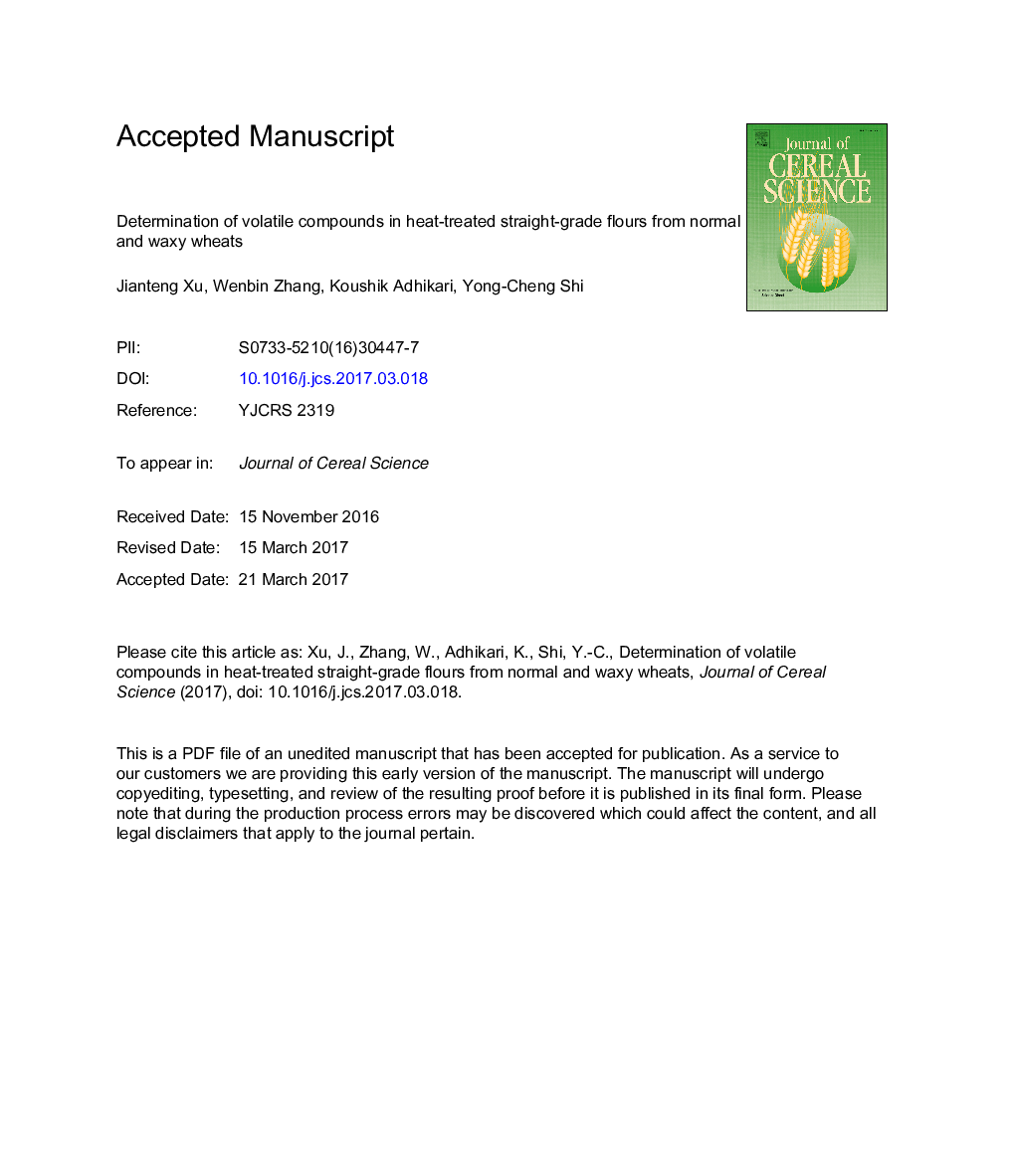| Article ID | Journal | Published Year | Pages | File Type |
|---|---|---|---|---|
| 5762357 | Journal of Cereal Science | 2017 | 33 Pages |
Abstract
Volatile compounds formed during heat-treatment of wheat flour influence the application of treated flour. In this study, normal and waxy hard wheat flours before and after dry-heat treatment were subjected to headspace analysis by solid-phase microextraction of volatiles followed gas chromatography-mass spectrometry (GC/MS). The untreated waxy wheat flour contained higher levels of odor-active compounds than normal wheat flour including aldehydes, alcohols, furans, and ketones. Lipid oxidation appears to play major role in producing such odor compounds. Heat treatments, depending on the severity, alter the profile of volatile compounds. Low temperature (100-110 °C) treatments effectively eliminated cereal odor (aldehyde) and did not introduce additional odors, providing a possible way to produce low-odor flours. Heat treatments at 120 °C and higher temperatures elevated the content of pyrazines, furans, and sulfur-containing compounds which together gave a roasty aroma to the flours. Considering organoleptic properties, treatments of flours at 140 °C was superior to 160 °C. The waxy wheat flour was more prone to produce odor-active compounds than normal wheat flour during the same heat treatment.
Keywords
Related Topics
Life Sciences
Agricultural and Biological Sciences
Agronomy and Crop Science
Authors
Jianteng Xu, Wenbin Zhang, Koushik Adhikari, Yong-Cheng Shi,
